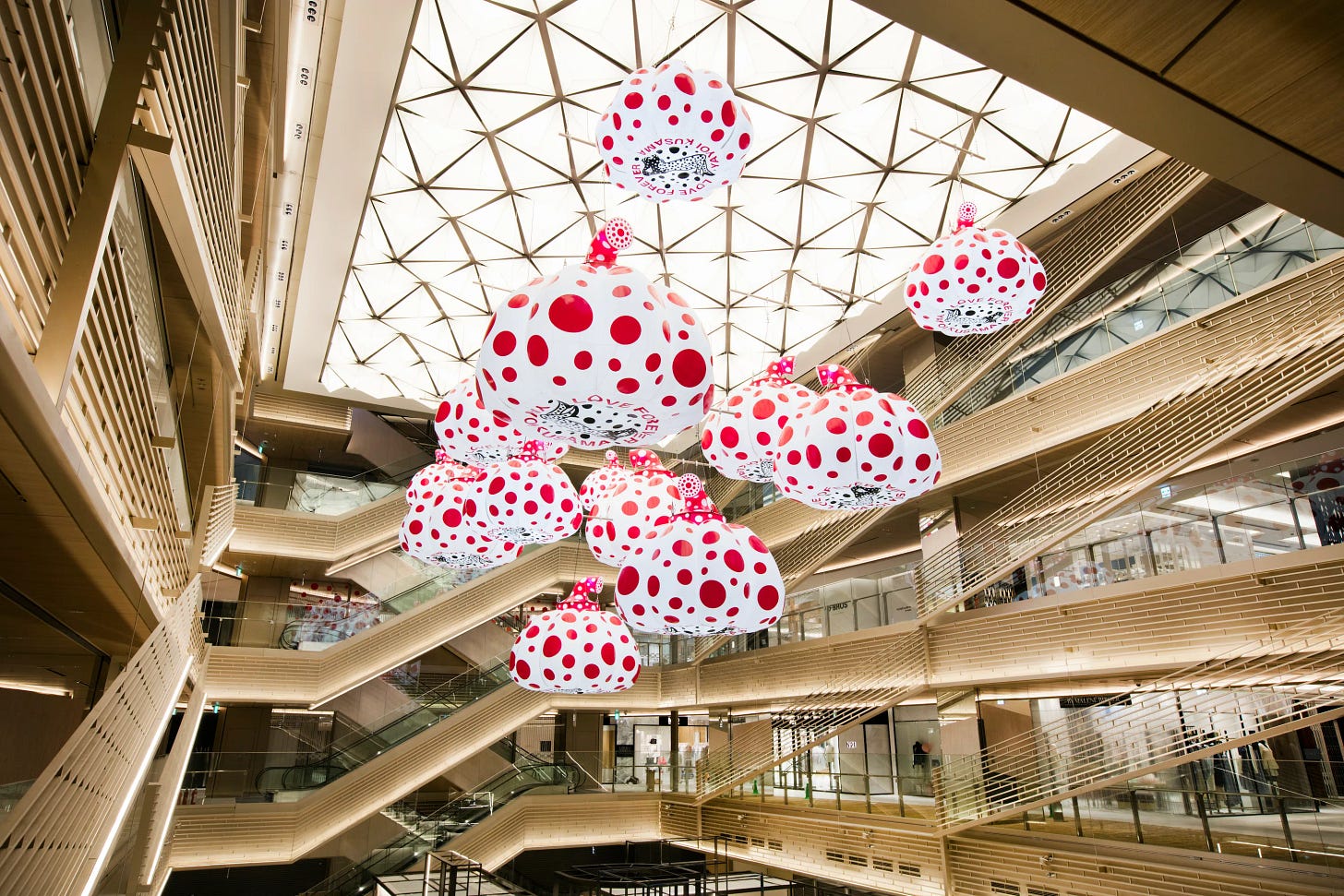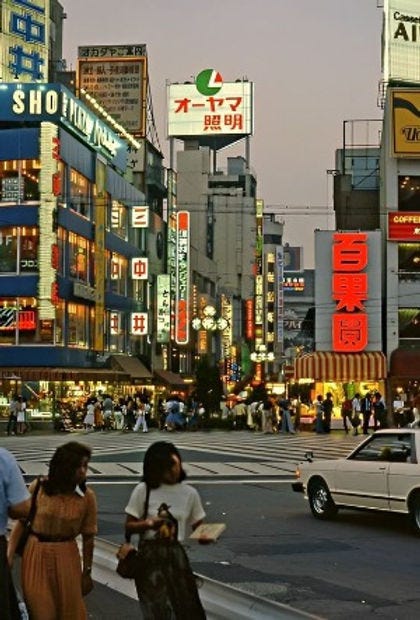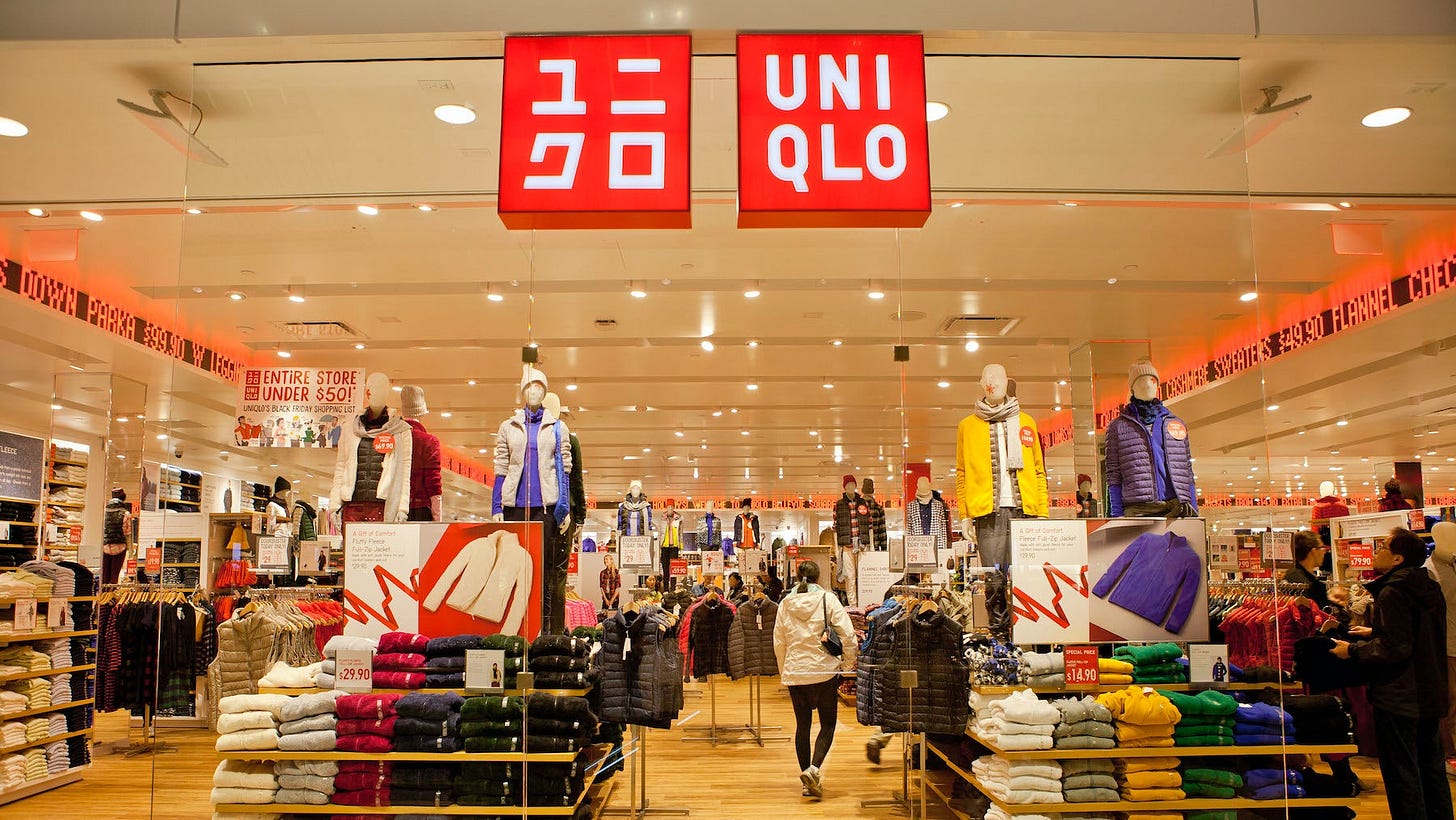Status and Style: The Japanese Consumer's Luxury Evolution
Tracing the decades of economic shifts and cultural trends that fueled Japan's high-end appetite.
This is part one in a three part series about Japan as an ode to the 2025 A/W Tokyo Fashion Week I’m currently attending. Stay tuned for next week as I’ll be recapping the events I attended as well as discussing the current state of affairs in the Japanese Luxury Resale Market.
As Americans, we often think that New York, London, Paris and Milan are the four primary powerhouse locations of luxury. London has hosted a men’s and women’s fashion show for years, the “Made in Italy” moniker is known for high quality, the French boast the vast majority of the luxury house headquarters, and walk around almost any street across New York’s five boroughs and you’re guaranteed to find someone with impeccable style. What many people don’t realize, however, is that for the last several decades, another city has been quickly rising through the ranks in the fashion world. So much so that you’ll see signs for every major fashion brand to speak of. Tokyo is not only home to hundreds of recognizable storefronts but also has an interesting story of how it became synonymous with high fashion.
After World War II ended, Japan entered its “Miracle Period.” Within 20 years its economy grew over 400%. The country’s growing consumer technological strength and innovation caused a massive amount of cash influx. In the late 1970s, eight of the largest banks were all Japanese and their combined assets were valued at over a trillion dollars. By 1985 Japan had entered a bubble economy. The real estate market was on fire with valuations at 4x anything within the U.S. At one point the Imperial Palace was estimated to be worth more than the entire state of California. These factors led to a huge rise in consumer spending, specifically luxury goods. Luxury fashion quickly went from something that was meant for a small portion of the elite to being adopted by nearly everyone. Dior was the first western brand to sign formal agreements to sell their clothes in Japanese department stores in 1953, and Louis Vuitton was also early to expand into this burgeoning market. When the economic bubble burst in 1990, they saw everything from stock market crashes to wage deflation, but despite this, there was still an insatiable appetite for luxury clothing. While some never changed their spending habits, others began adopting the mentality of ittengouka-shugi, meaning rather than having an entire wardrobe of luxury items, some Japanese consumers would focus on one piece of luxury (a purse, jacket, etc) to accentuate what they could afford. This was enough to keep the engine running and create a future set up for the luxury economy.
Through the 90s and into the early 2000s, the luxury market began to grow again and its growth rate eventually surpassed what it was during the bubble. Brands were flocking to build flagship stores in Ginza as the neighborhood continued to strengthen its reputation of wealth. This spending pattern was interesting because these years are also considered the “Lost Decades,” a period of time categorized by dramatically slow economic growth (as in only 1-2% GDP growth for twenty years.) While the situation has improved, economist say the country has yet to fully recover. At the time, hundreds of thousands of businesses went bankrupt, job security evaporated, and suicide rates began to rise from despair. So how could the country become a global luxury power through all of this? My hypothesis is even though money wasn’t bountiful, people start using shopping as a form of escapism. Psychologically there were very few things that would bring the them joy, but shopping became something to remind people how good things were in the 80s and serve as a beacon for a hopeful future.
In 2009, consumer sentiments began to shift. Yes, part of this was caused by the global financial crisis, but it couldn’t be the full explanation since luxury has weathered previous storms in the region. The Business of Fashion reported that at its height, “Japan could deliver up to 35% of a luxury brand’s revenue.1” The problem came from customers young and old making a mental transition that their self worth wasn’t tied to material things. Less expensive brands that allowed for more self expression became the norm and were stealing market share by an alarming rate. People were finally being more realistic with what they could afford but were still excited about self expression and didn’t feel like they were settling. Additionally, there were substantial price differences of the same products that were sold in Japan vs other countries, and Japanese customers weren’t seeing the value of European brands in the same way.
So what gave Japan the luxury powerhouse title that more people are becoming familiar with? A few things. Tourism has been a major contributor as Americans, Chinese, and people from other countries started to visit Japan more and flood their stores. The yen was also starting to become week (something that they’re still grappling with) and travelers wanted to buy products in Japan since they were cheaper than their home country - a direct reversal of what had been happening just a few years prior. Before this year’s luxury slowdown, 2017 - today showed massive improvements. Ginza Six (a six story building that houses everything from Loewe to Valentino) was built on the same street as seemingly dozens of household brand names. Luxury streetwear brands like Stussy and Supreme had lines wrapped around the block because of hyped up collaborations. Full neighborhoods across the city are now devoted primarily to shopping. I think these slowdowns will always be nothing more than a mere blip, and Japan will remain a top contender in luxury fashion.
The Decline of Big Brand Loyalty; https://www.businessoffashion.com/articles/news-analysis/tokyo-the-decline-of-big-brand-luxury/





Awesome write up! Nothing beats shopping in Ginza. Every brand has its own unique building, which adds to the allure and experience.
An incredibly well-written piece! Looking forward to the next, highlighting your time at the 2025 A/W Tokyo Fashion Week.